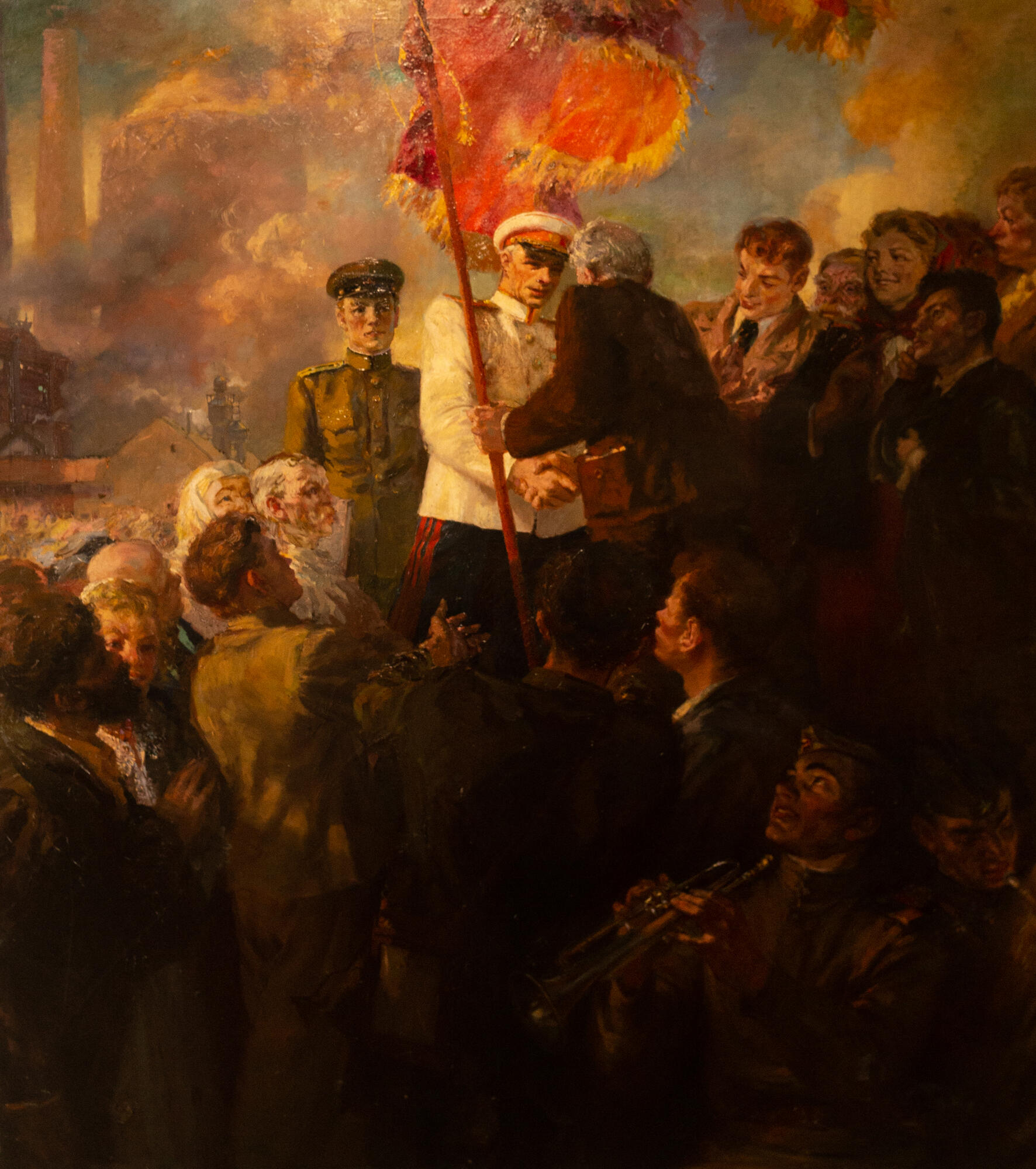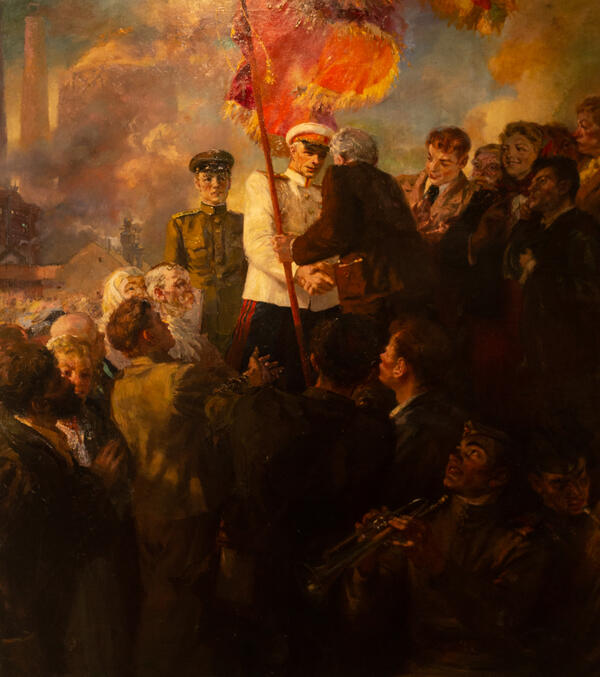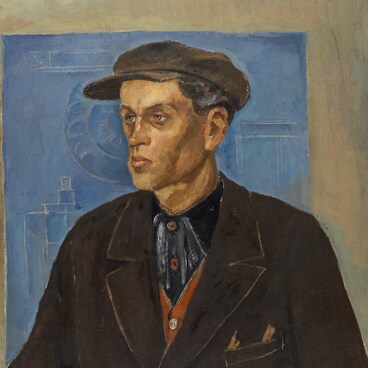The painting ‘Ural for the Front’ by Oleg Korovin is dedicated to the Great Patriotic War. The artist glorified the heroic acts of Ural workers.
During the war, the overwhelming majority of Soviet citizens lived by the popular slogan ‘Everything for the Front. Everything for Victory’. Many of them volunteered to go to war themselves while others worked day and night to support the front line. The Ural Military District ensured a continuous flow of supplies: in 1941–1942, the equipment of around 700 plants was moved to the Ural region, and three major tank factories were built in Sverdlovsk, Chelyabinsk and Nizhny Tagil. For the first time in history, Soviet factories launched assembly line production of tanks.
Engineers and technicians were invited from Moscow and other cities to instruct local citizens in technical professions: people learned the ropes right on the shop floor, studied at Stakhanov schools and technological institutes, as well as attended courses of technical basics.
Artists strove to reflect the public sentiments in those years. As a rule, they abided by the official art rules, glorifying the brave deeds of the Soviet people. Pictures were filled with heroic enthusiasm and hope for a peaceful future. Oleg Korovin was a front-line officer and shared those beliefs, although the subject of war does not come up often in his artwork.
The painting ‘Ural for the Front’ was part of a triptych that emphasized the importance of the home front support. The center of the composition depicts a brave officer in a white uniform coat whose tall figure stands out amid the crowd. Above him is a flying red flag.
Korovin chose the realistic manner of painting. It is important not to confuse realism with photorealism: a painting may look like a photograph but have nothing to do with the realistic tradition. On the contrary, a painting may show visible brush strokes and imperfect lines but still belong to realism. First and foremost, realism stands for being true-to-life, reflecting the actual situation in society, accurate portrayal of landscapes and cityscapes, avoidance of hidden symbols and mystical signs.
Despite being a realistic painting, ‘Ural for the Front’ contains an allegory (a hidden meaning): the white uniform coat and the flying red flag evoke associations with the triumphal victory of the Soviet army.
During the war, the overwhelming majority of Soviet citizens lived by the popular slogan ‘Everything for the Front. Everything for Victory’. Many of them volunteered to go to war themselves while others worked day and night to support the front line. The Ural Military District ensured a continuous flow of supplies: in 1941–1942, the equipment of around 700 plants was moved to the Ural region, and three major tank factories were built in Sverdlovsk, Chelyabinsk and Nizhny Tagil. For the first time in history, Soviet factories launched assembly line production of tanks.
Engineers and technicians were invited from Moscow and other cities to instruct local citizens in technical professions: people learned the ropes right on the shop floor, studied at Stakhanov schools and technological institutes, as well as attended courses of technical basics.
Artists strove to reflect the public sentiments in those years. As a rule, they abided by the official art rules, glorifying the brave deeds of the Soviet people. Pictures were filled with heroic enthusiasm and hope for a peaceful future. Oleg Korovin was a front-line officer and shared those beliefs, although the subject of war does not come up often in his artwork.
The painting ‘Ural for the Front’ was part of a triptych that emphasized the importance of the home front support. The center of the composition depicts a brave officer in a white uniform coat whose tall figure stands out amid the crowd. Above him is a flying red flag.
Korovin chose the realistic manner of painting. It is important not to confuse realism with photorealism: a painting may look like a photograph but have nothing to do with the realistic tradition. On the contrary, a painting may show visible brush strokes and imperfect lines but still belong to realism. First and foremost, realism stands for being true-to-life, reflecting the actual situation in society, accurate portrayal of landscapes and cityscapes, avoidance of hidden symbols and mystical signs.
Despite being a realistic painting, ‘Ural for the Front’ contains an allegory (a hidden meaning): the white uniform coat and the flying red flag evoke associations with the triumphal victory of the Soviet army.



